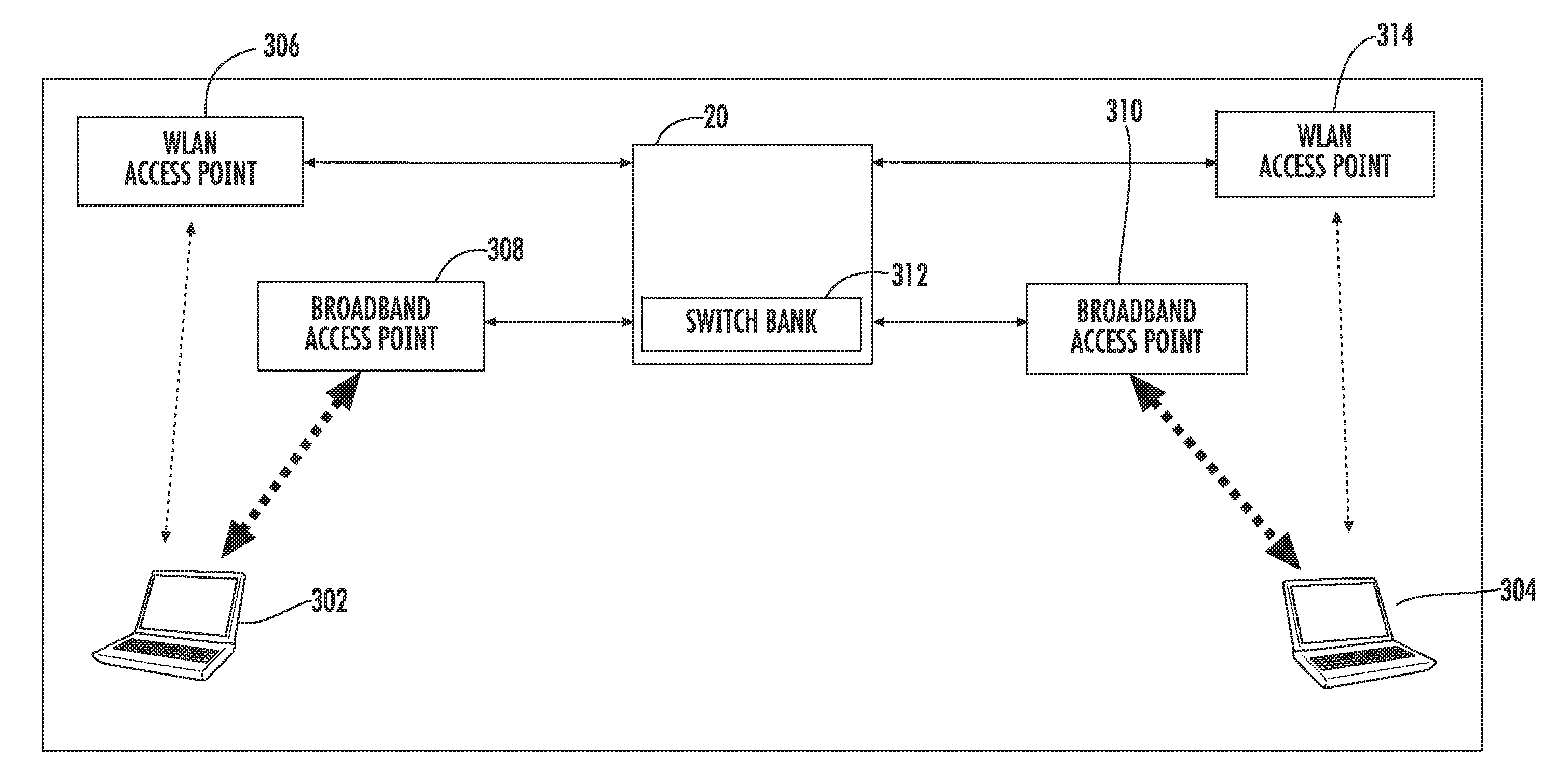Radio-Over-Fiber (RoF) System for Protocol-Independent Wired and/or Wireless Communication
a radio-over-fiber, protocol-independent technology, applied in the field of wired and/or wireless communication systems employing a radio-over-fiber (rof) communication system, can solve the problems of affecting the service life of the system, and requiring complex amplifying and/or repeating requirements. achieve the effect of enhancing coverage, low loss, and high bandwidth
- Summary
- Abstract
- Description
- Claims
- Application Information
AI Technical Summary
Benefits of technology
Problems solved by technology
Method used
Image
Examples
Embodiment Construction
[0008]Embodiments disclosed in the detailed description include optically-switched fiber optic wired and / or wireless communication systems and related methods to increase the range of wired and / or wireless peer-to-peer communication systems. In one embodiment, the optically-switched fiber optic wired and / or wireless communication system may include a head-end unit (HEU) having an optical switch bank. A plurality of fiber optic cables, each of the plurality of fiber optic cables comprising at least one optical fiber, are configured to carry a Radio-over-Fiber (RoF) signal from the HEU to a plurality of remote access points. A first one of the plurality of remote access points is configured to form a corresponding first cellular coverage area where a first peer device is located. A second one of the plurality of remote access points is configured to form a corresponding second, different cellular coverage area where a second peer device is located. The optical switch bank is configure...
PUM
 Login to View More
Login to View More Abstract
Description
Claims
Application Information
 Login to View More
Login to View More - R&D
- Intellectual Property
- Life Sciences
- Materials
- Tech Scout
- Unparalleled Data Quality
- Higher Quality Content
- 60% Fewer Hallucinations
Browse by: Latest US Patents, China's latest patents, Technical Efficacy Thesaurus, Application Domain, Technology Topic, Popular Technical Reports.
© 2025 PatSnap. All rights reserved.Legal|Privacy policy|Modern Slavery Act Transparency Statement|Sitemap|About US| Contact US: help@patsnap.com



